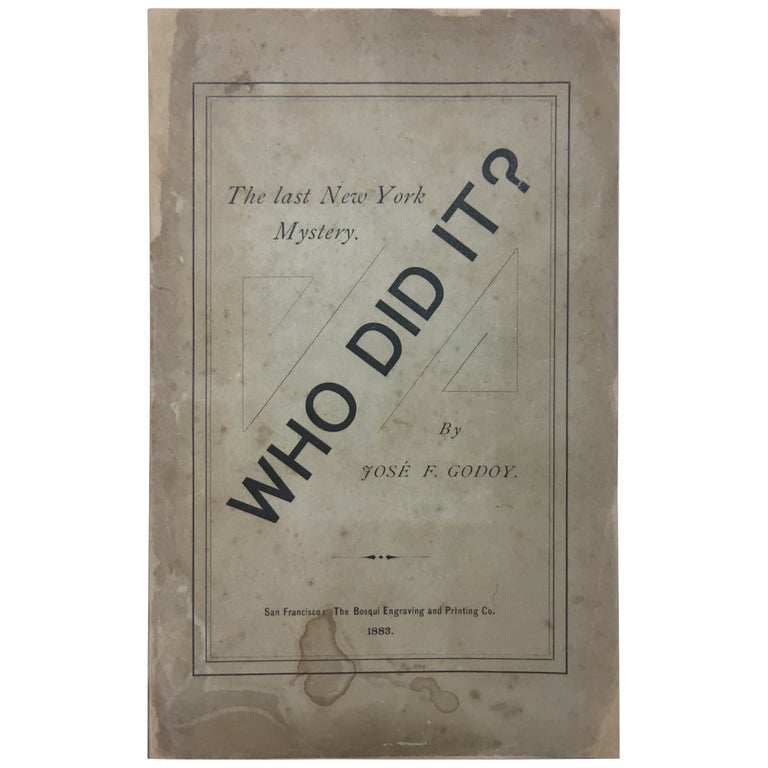
Who Did It? The Last New York Mystery
Notes: A newly recognized early novel Mexican American that is one of the first mysteries by a Latin American writer.
Who Did It? is a farce bordering on a parody of 19th century romance, with allegorical character names: Police officer Clubready; Mr. Fustian; Detective Sureclew, etc. The mystery at the center of the story involves an heiress, a love triangle, and a murder by poison—of a housecat.
The novel simultaneously spoofs the conventions of the dime novel while poking fun at the high-society pretensions of its protagonists. Godoy describes the lineage of the Fustians as extending back to the Mayflower, passing through several spelling changes to the surname and an obligatory-for-the-genre Indian princess ancestor. But the narrator notes sardonically that the original Mayflower Fustian came to America "in the capacity of cook." The highbrow New Yorkers are descended from the help.
José Francisco Godoy (1851–1930) is very little known today and, as best I can tell, has not received critical attention from the academics seeking to recover the Hispanic literary heritage of the United State. Godoy's father, José Antonio Godoy was born in New Granada (now Colombia) and was living in New Orleans in the 1840s. There he married a Louisiana Creole woman and started El telégrafo, a Spanish-language newspaper. Within a year, the Godoys left for Mexico, where Sr. Godoy edited several newspapers and José F. was born. In 1864, the elder Godoy was appointed consul for Mexico in San Francisco, and the family returned to the United States.
José Antonio died of a heart attack in 1869. José Francisco became a US citizen in 1873. Over the next two decades, both his son and his widow won contracts to translate California laws into Spanish. The young José Francisco also earned a law degree, joined San Francisco literary circles, wrote plays for the local theater, published this novel, wrote a guide to San Francisco for Mexican visitors, and started a newspaper in Mexico City. He then followed his father into the diplomatic corps, representing Mexico in the US. He retired to Mexico in the 1920s, where he continued writing until his death.
Edition + Condition: A very good looking copy, with professional conservation by ECS. The book had been repaired by saddle-stitching the sheets. This work was reversed, with the holes almost invisibly filled and the gatherings were resewn in their original configuration. The wrappers were respined (the original did not have printing on the spine, so no information was lost) and almost invisibly lined with Japanese paper to strengthen them. The bookplate of collector Adrian Homer Goldstone was removed and replaced on top of the new lining. The result is a fully readable copy of a fragile book.
Publication: San Francisco: Bosqui Engraving and Printing Co., 1883.
Item No: #306855
Sold
